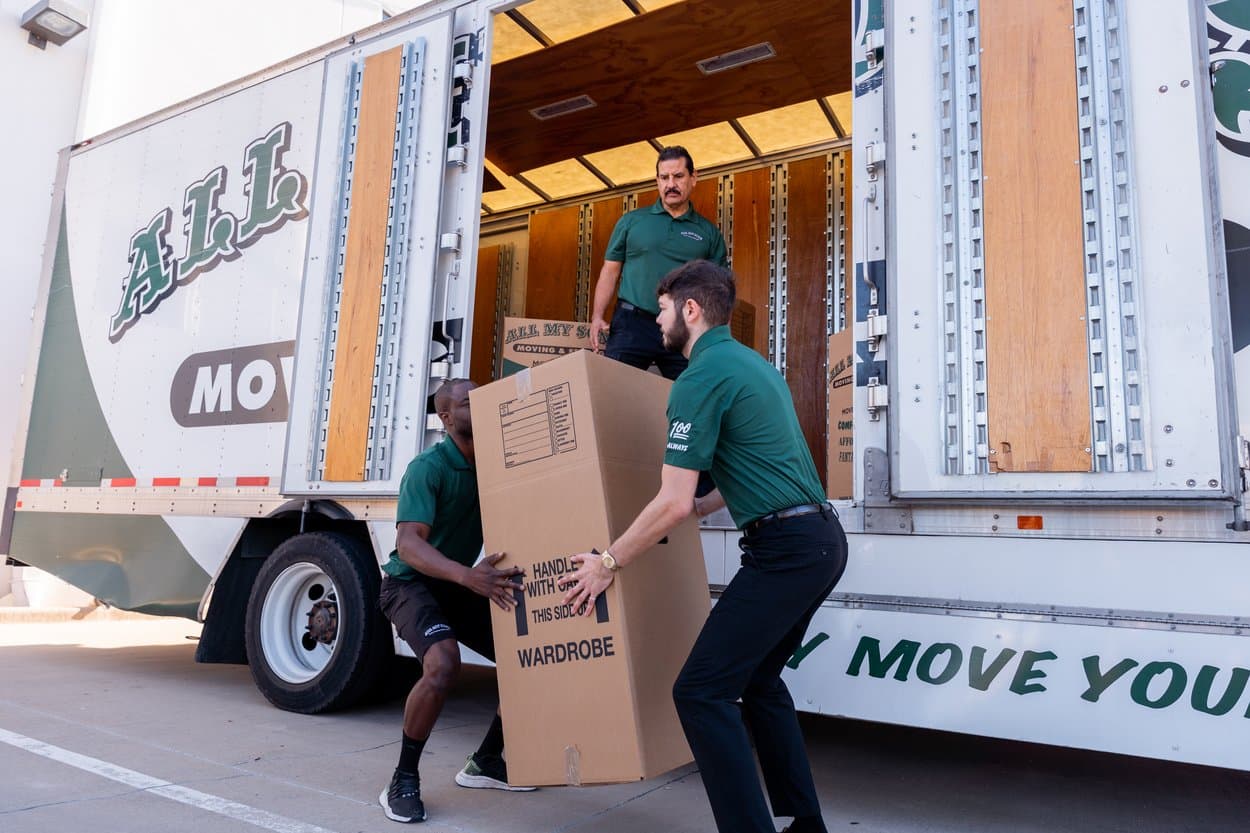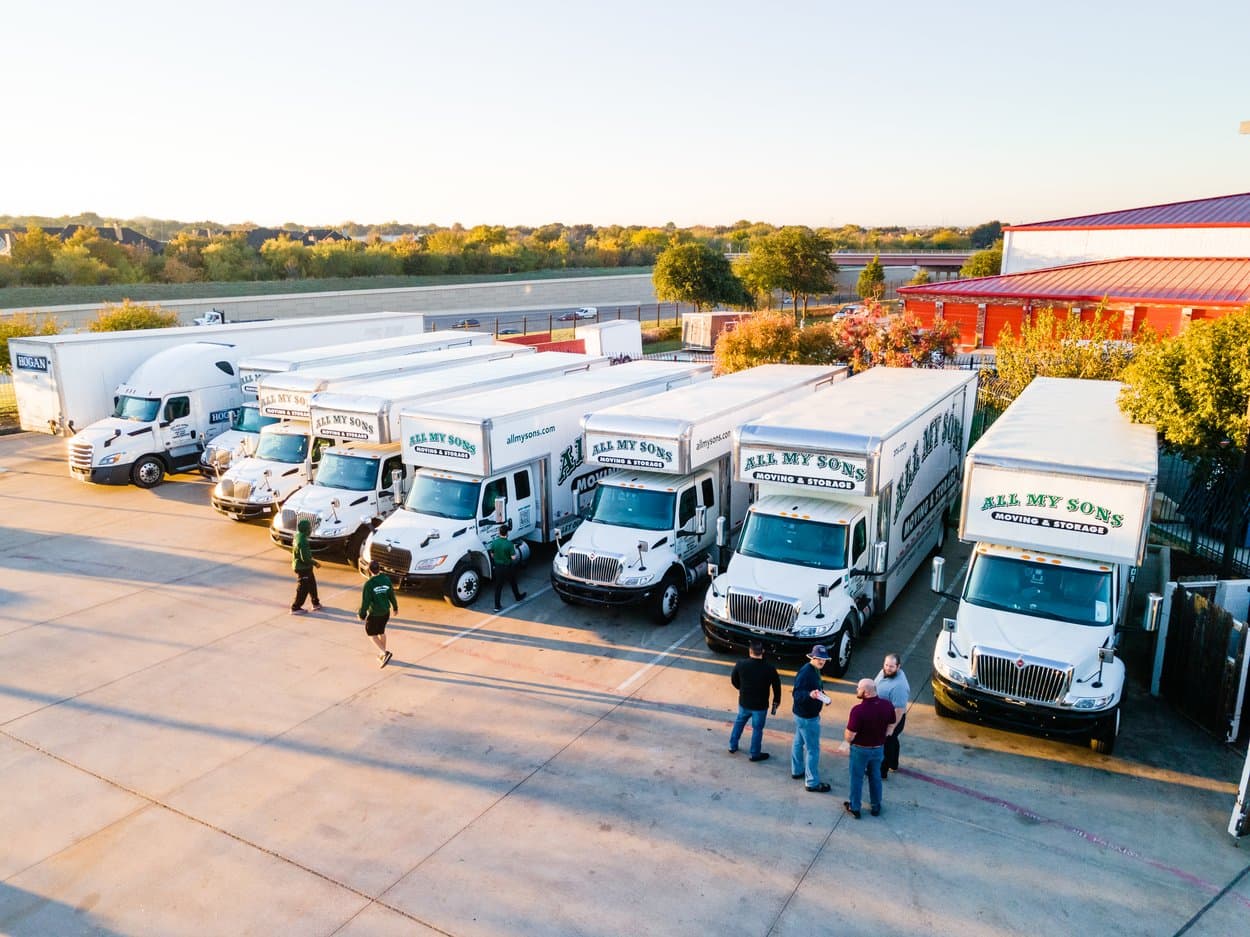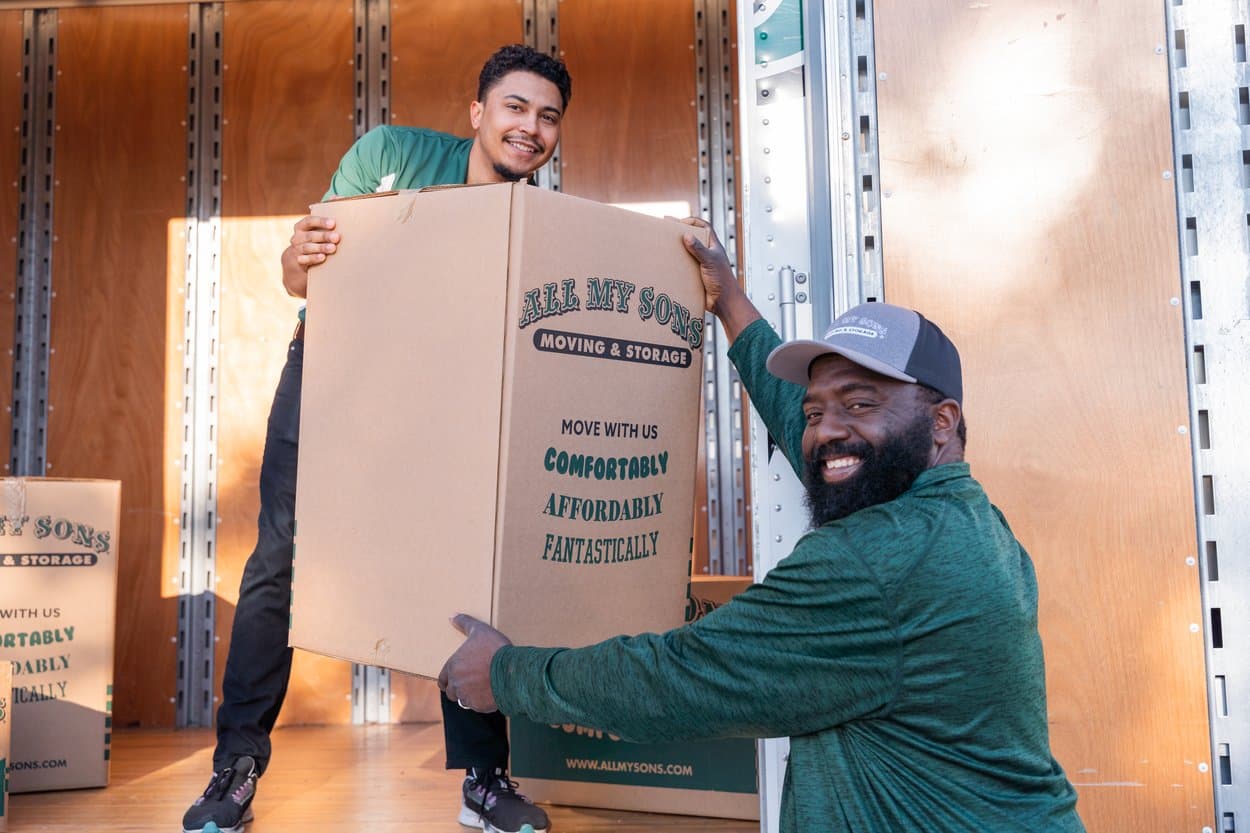Keep Track of Your Belongings with a Moving Inventory
Create a moving inventory with steps and advice from All My Sons Moving & Storage.
Getting organized before a local move can help reduce your stress levels. Part of planning ahead means creating a moving checklist, stomping your moving procrastination, and charging into your move head-on with the right tools and resources.
One of the most useful tools you can create during your moving process is a household or moving inventory. Beyond ensuring your belongings are not forgotten or lost, a moving inventory can help you navigate all your boxes as you unpack at your new place and provide a record of an item’s condition for insurance purposes should anything be damaged during the move. A household or moving inventory remains a handy resource long after you finish unpacking. With your household inventory you can keep track of your collections and have documentation ready for any insurance claims you may need to make due to disasters or theft. The only downside is you must take the time to create the inventory.
How do you go about creating a household inventory? It stands to reason that the more items you have and the larger your home, the longer this process will take. Remember though, the way to accomplish any big task is to break it down into smaller steps and take one step at a time. If you know that you are moving soon, creating a moving inventory is one of the first steps you should take in your moving checklist. Start early, go room by room or box by box, and before you know it, you’ll have a useful tool that you can modify for subsequent moves or keep on hand for your records.
Why Should You Create a Moving Inventory?
In listing all your belongings, you can keep track of what you own when you move. There’s nothing quite as nerve-wracking as needing something, knowing that it’s in a box somewhere, and having no idea which box that is. A detailed moving inventory helps you stay on top of your packing process, enabling you to group items from each room and record which boxes the items are in. You won’t have to sift through a dozen boxes or rush around scanning box labels if you keep a moving inventory that you can quickly reference.
In your inventory you can record the condition of your furniture, appliances, or precious items for insurance purposes. If an item is lost, stolen, or damaged during your move or after you are moved in, you can provide your records of the item’s condition to your insurance company. This is crucial to ensuring any claims you make are paid without a hitch.
The future could hold any number of unforeseen disasters like fires or floods. Be prepared now and create a household inventory to help you move. You’ll be grateful you organized your belongings long after you have settled into your new place.
Preparing to Create a Moving Inventory
You have now made the decision to create a moving inventory prior to your move. Before you start though, you should evaluate what you own and consider your options for taking inventory.
You have several options available to you, but think about your time, energy, budget, and future needs prior to settling into any specific system or tool.
Determine What Rooms and Items You Will Record
If you want to take a meticulous record of absolutely everything you own from your clothes to your kitchen appliances, get ready to be at this step for a while. Chances are though, there are some items you might not care to catalog as thoroughly and that’s okay. This inventory is intended to help you move and if you don’t want to notate every pair of socks you have in your drawers, that is entirely your choice.
Take a quick walk through your home and glance in every room. Determine what collections you’d like to take record of. It may be that you pack your plates all together in a box labeled “Plates,” and decide to make an excel spreadsheet to track the condition and location of all your individual books. This is your time to consider what is most important to you.
Decide How You Will Create Your Inventory
In this incredible digital era, the possibilities are endless. You could find a household inventory app, use a series of spreadsheets, or make a simple online document. If none of those options appeal to you, there’s always old-fashioned pen and paper.
Take a moment to research your options and think about your needs. Should you prefer a system where you can quickly search your inventory with a keyword, go digital. If you want something that will be available on multiple devices even if something happens to your home, make sure your inventory is stored online. It might be that you use one system for your kitchen and a different system for your media collection. The most important thing is that whatever moving inventory system you use works for you.
Useful Tools for Creating a Moving Inventory
Gather your necessary tools before you start cataloging. For an old-fashioned written inventory, you might want to grab a notebook or binder with dividers. You can create separate sections for every room and use colored-coded stickers or highlighters to organize information. You want to be sure your household inventory will survive a home disaster once your move is over, so it might be a good idea to keep it either in a fireproof safe or outside your home in a safety deposit box.
Several home inventory apps are available on the web. Search for these and look at the features offered to determine if they meet your needs:
Itemtopia: Track property, valuables, collections, and warranties all in one app.
Memento Database: Organize anything in this desktop and mobile app.
NAIC Home Inventory: Create a record of your items and get tips on filing claims.
Your homeowners or renter’s insurance may have an app or spreadsheet template you are able to use. Check out their website or ask your agent to see if there is a tool they offer.
There’s always Excel and Google Sheets for people who want a do-it-yourself digital option. The only wrong way to document your household inventory is to not document your household inventory and rely on your fallible memory.
Step-by-Step Guide to Creating a Moving Inventory
Now that you have decided what you are documenting and how you are keeping your record, it’s time to get down to business. This will be a long process that gets even longer the more you own, so take it one room or box at a time.
Step 1: Go Room by Room
Tackle your moving inventory head-on by listing your rooms and systematically checking off every space in those rooms. If the whole process seems overwhelming and you’re struggling with moving procrastination, start small. Pick a half-bathroom or a hallway linen closet to begin your inventory.
When the small rooms are done, move on to the big spaces like the bedrooms, living room, kitchen, and dining area. Take note of what items are stored in what furniture pieces, and don’t forget your wall décor.
You can create your moving inventory as you pack or before you pack.
Step 2: Document Conditions
For furniture, valuables, and any other items that you deem important, note the condition of the item. Look for existing damage and wear, especially for your larger items.
When you decide that it is necessary, take pictures or video of your item’s condition. Depending on your inventory system, you may be able to keep a copy in your digital inventory library.
Write down any other information you want to remember. This could be referencing where you keep the owner’s manual, original receipt, or warranty document. If you are cataloging sentimental items, you can record where and when you received the item as well as who might have given it to you. It’s your inventory and you get to make the rules.
Step 3: Number Boxes
As you pack boxes, assign each box a number. You can number boxes based on room or count from zero no matter what area the box comes from. The important thing is that the numbering system you choose to use makes sense to you and your household or business.
List the contents of each box in your moving inventory. Try to organize the items on your list in a similar fashion to how they are organized in the box. This will come in handy later if you are searching for an item. When you know your item is in Kitchen Box #4 toward the bottom, you can run straight to that box and dig right in. See how much less anxiety you feel just knowing you don’t have to blindly hunt?
Using Your Moving Inventory on Move Day
When your moving inventory is complete, make a final check to ensure all your items have been accounted for. There’s nothing quite like thinking you have covered every nook, cranny, and corner and then discovering there’s a cabinet full of extra stuff that you missed on move day. Once your moving inventory is double-checked and finalized, you are ready for your move.
Keep your household inventory in an easily accessible location for the duration of your move. If you have a physical written list, make sure it is traveling with your essentials and emergencies bag rather than packed in a box. You will be glad you kept this list on hand.
Once the unloading and unpacking begins, it’s time to reference your list. Check the condition of your large and precious items as they are moved into place and compare it to the condition they were in when they left your last home. This way you can notate any new damage and file claims if needed.
As you unpack your boxes, enjoy using your inventory to quickly find and reorganize your belongings. With an inventory you can double check, items are significantly less likely to go missing. You always know exactly which box to look in.
Once your move is complete and all the boxes have been unloaded, keep your inventory on hand and modify it as you add belongings to your household. You could save yourself the trouble of rebuilding the inventory from scratch for your next move. Even if you do not anticipate moving for some time, a household inventory can help you find things in the future, document your collections, or help with insurance claims should a home disaster happen. The future is uncertain, make sure you hang onto your household inventory and update it as life happens.
An Organized Move with a Household Inventory
Make your next move with less anxiety and add creating a moving inventory to your moving checklist. When you document all your items and their condition prior to your move, you can simplify and streamline the unpacking process. Should anything sustain damage or go missing during your move, you will have the proper documentation to make filing a claim or report a piece of cake. Doing the work of building your household inventory now will pay off again and again in the future. Once you know you are moving, get started finding the system that will work for you and tackle your home collection room by room.
Congratulations, you have a household inventory and have taken the first big step toward an organized move. Now that you have your moving inventory ready to go, it’s time to move on to the next step on your moving checklist: Book your local movers!
Hire All My Sons Moving & Storage to help manage all your moving needs. With almost 30 years of experience helping businesses and families make their big move, we have the skills and resources to handle the heavy lifting for your relocation. From professional packing to storage options, we can take care of every step of your move whether you’re going around the corner or across the country. Get a free quote to start your stress-less move.
Quick Moving Tips

How to Pack Clothes for a Move
All My Sons Moving & Storage provides professional packing services and has some special tips for packing your clothing for moving.

How to Make a Seamless Business Move
Tips for pulling off your business move from the experts in commercial moving services at All My Sons Moving & Storage.

How to Pack a Computer for a Move
Here are 5 steps that should help you get your computer secured for the move.


